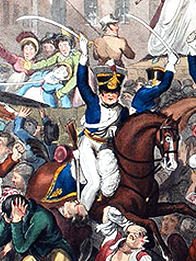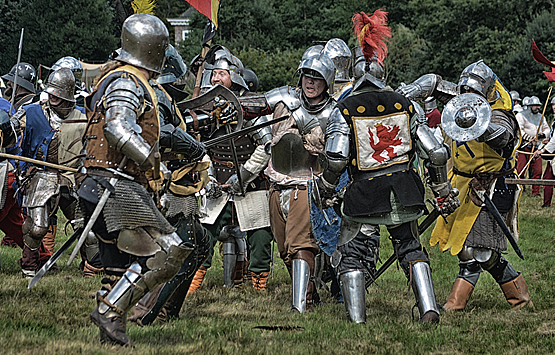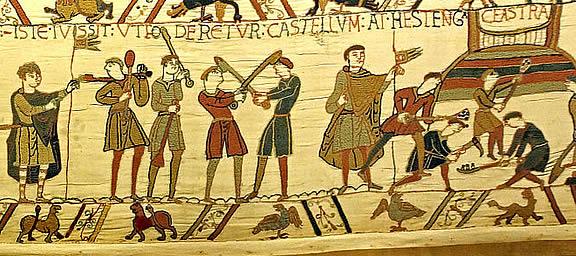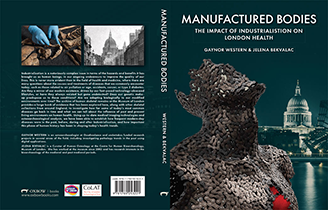Warfare
Warfare was almost endemic during the medieval period and involved physical one-on-one combat with a range of sharp-bladed, penetrative and blunt weapons that often resulted in brutal injuries.
A significant number of the male population would have been involved in numerous battles over the centuries, including the Battle of Hastings, skirmishes at the Scottish Borders, the War of the Roses and the English Civil War amongst many others.
In fact, medieval London was founded by a siege on the City in AD1066 led by William the Conqueror, ‘causing no little mourning to the City because of the very many deaths of her own sons and citizens’, according to the Norman chronicler, William of Jumieges.
Even when digging fortifications at Hastings in preparation for attack, according to the Bayeux Tapestry, there was in-house fighting and not everyone saw eye to eye (Dennis Jarvis)
As archaeologists, we find evidence of medieval warfare from victims buried in mass graves, as well as individuals in burial grounds. The skeletons often exhibit extensive sharp and blunt weapon trauma. One such individual was discovered in the medieval burial ground at Spitalfields, London. Remarkably, this individual had survived their injury, and the traumatic lesion to the cranium consisted of smooth, rounded bone indicating that the wound had healed.
Although the majority of cranial trauma we find in the archaeological record dates to the medieval period, warfare and the use of swords continued up until the First World War. Their use declined, however, as other warfare technologies advanced, leading to the introduction of the crossbow and guns. Civil political incidents also involved the use of swords in the Industrial period, such as at the Peterloo massacre in 1819 in Manchester.
During the massacre, sabres were drawn by the Manchester and Salford Yeomanry on a large crowd of protesters campaigning for parliamentary reform following a dire economic slump and chronic unemployment, in combination with a harvest failure, the Corn Laws keeping bread prices high and no votes for working class men or women. According to contemporary reports, between 9 and 17 people were killed and between 400-700 people injured. The Peterloo massacre has been referred to as ‘a political earthquake in the northern powerhouse of the industrial revolution’ by historian Robert Poole.

Peterloo Massacre
Other forms of interpersonal violence were also surprisingly common, although the consequences weren’t intended to be quite as severe. Nonetheless, many enjoyable sporting activities could involve some quite serious injuries.
Next page: Sport










